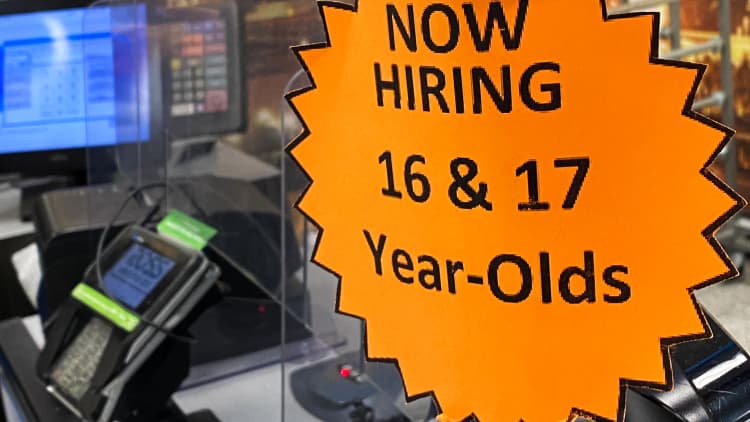Small businesses across America — stores, restaurants, seasonal businesses such as ice cream shops — are still having trouble filling low-level positions, the kinds of jobs that would typically be filled by teen workers.
The labor force participation rate for workers ages 16 to 24 has plummeted over the past 20 years. The Covid-19 pandemic in 2020 caused another big drop in youth workers. There's been a slight uptick in teens returning to work since then, but youth employment rates have yet to rebound from historically low levels.
According to the Economic Policy Institute, the labor force participation rate among 16- to 24-year-olds has fallen from 65.8% in 2000 to 55.6% in 2022.
To boost youth employment, lawmakers in at least 10 states have pushed bills to loosen child labor laws and protections to increase youth labor participation.
Supporters of strong child labor restrictions disagree. "It may be beneficial to the economy in some ways, but it's not appropriate to prioritize the economy and industries and businesses over the health and well-being of children," says Jessica Heldman, a professor at the University of San Diego.
This is all leading to a central conflict in the attempt to reinvigorate the youth labor force — a fight between state lawmakers who want to peel back child labor laws and those who think those moves will lead to more exploitation of younger workers.
Watch the video above to find out more about the youth employment picture and how the push to bring more teenagers to the workforce is leading to a heated debate over child labor laws across America.


